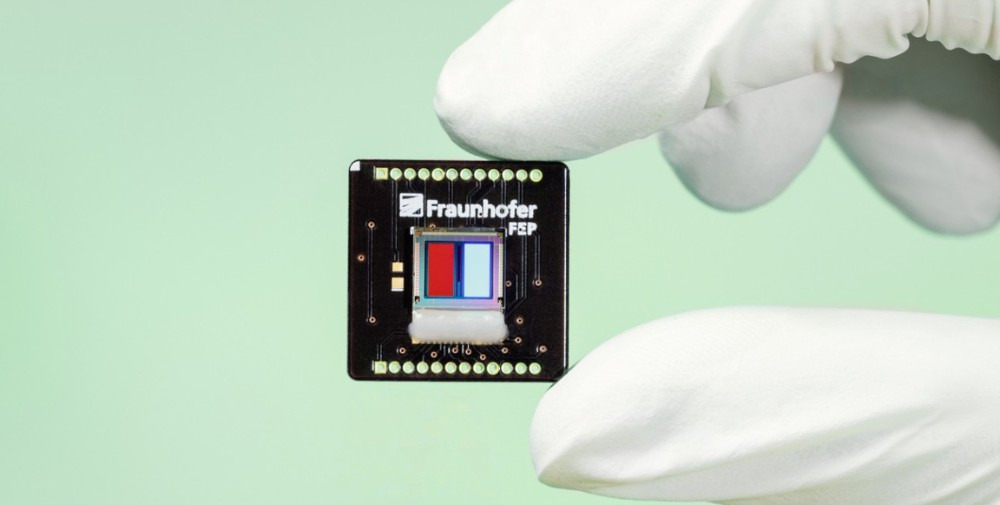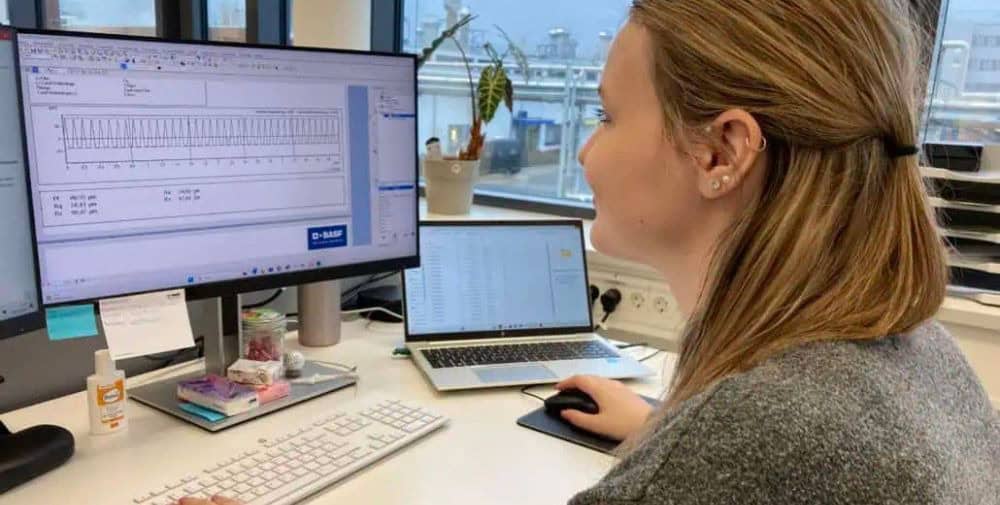Sensors for determining the content of certain gases in the environment can be found in a wide range of applications. In particular, gas sensors for determining the oxygen content can be used in food production, environmental monitoring to measure the oxygen content in bodies of water or oceans and even medical devices for respiratory gas analysis. The choice of a suitable gas sensor always depends on the specific requirements of the application, such as accuracy, response time or environmental factors, as well as the price and size of the system.
Looking at the class of oxygen sensors alone, there are many optical sensors on the market that are difficult to miniaturize due to their separate LED, filter and sensor components. Ultra-flat OLED light sources integrated directly on the CMOS chip overcome these hurdles and are popular alternatives due to their easy handling and integration capability into existing systems.
The Fraunhofer FEP has many years of expertise in the development and production of highly integrated electro-optical components based on OLED-on-silicon technology. In addition to the realization of various OLED microdisplays, the scientists also use the technology for optical sensor solutions.
The result is a miniaturized phosphorescence sensor in which a marker dye on the OLED-on-silicon chip is in direct contact with the oxygen process and is excited by modulated blue OLED light, while the phosphorescence response is detected directly in the sensor chip. Depending on the dye used, other gases or pH values, pressure and temperature can be measured in addition to the oxygen content in the future.
There are no commercial solutions for the excitation and readout of dyes including control on a chip area of less than 8 × 8 mm on the current market for comparable sensor chips. This makes it significantly smaller than previous setups for the excitation and measurement of dyes to determine the concentration and state of gases. The decay time of the dye phosphorescence is a parameter for the oxygen concentration of the environment. The significantly lower phosphorescence signal with increasing oxygen content is detected via integrated silicon photodiodes, amplified locally in the chip and then evaluated with regard to the phase shift to the excitation signal.
These previous sensor chips were processed in a rather complex process with an earlier “Vitex” thin-film encapsulation, which consisted of a combination of sputtered oxide layers as a barrier against oxygen and water as well as several organic smoothing layers. A disadvantage of this encapsulation technology is the high complexity, which requires at least 2-3 process chambers and the stability of the process parameters is challenging. In addition, particle contamination reduces the yield when processing these sensor chips.
In order to increase the yields of the sensor chips and to be able to offer even smaller chips in the future, the Fraunhofer FEP focused on optimizing the encapsulation technology as part of the AquaSens project funded by the German Federal Ministry for Economic Affairs and Climate Protection. The result is significantly improved gas sensor chips for oxygen measurement on a very small surface area.
Project manager Dr Karsten Fehse explains: “To optimize the overall chip, we have established a new encapsulation layer consisting of an atomic layer deposition (ALD) barrier layer. A major advantage here is that we only need one process chamber, which can reduce the process steps and costs enormously. In addition, the process now has significantly fewer particles and we obtain fewer defects in the encapsulation layers of the sensor chips, which naturally increases the yields. In addition, the new ALD technology allows us to adjust the layer thicknesses of the individual layers very precisely and thus achieve a high reproducibility of the encapsulation barrier.”
The scientists have already carried out initial ageing tests on chips with and without additional glass encapsulation. The yield of the sensor chips when stored for 90 days at 85% relative humidity and 85 °C was significantly higher than with the previous “Vitex” encapsulated samples. These positive results under the very high requirements for organic components show the stability and usability of the organic-CMOS combination for sensor technology. Furthermore, the first demonstrators for oxygen measurement have already been implemented and evaluated for determining concentrations in air and water. The miniaturized sensor concept has been able to determine the oxygen concentration between 0 and 20% in air comparable to literature values.
In addition to optimizing the encapsulation of the sensor chips, the researchers at Fraunhofer FEP want to reduce the overall chip size to less than 2 × 2 mm in the future. Karsten Fehse explains: “One of the challenges of further miniaturization is the optical separation of light generation and detection. The closer the light generation by the OLEDs gets to the silicon photodiodes, i.e. the smaller the chip becomes, the more difficult it is to achieve this optical separation. If the signal separation is poor, the photodiode only detects the OLED signal, but not the dye response signal. With our know-how in chip development, we are working on solutions here by adapting the light emission characteristics of the OLEDs and integrating color filters on the chip.
The developed sensor chip for oxygen determination is already available at Fraunhofer FEP and will be presented at IEEE Sensors 2023 in Vienna, from October 29 to November 1, 2023 at booth no. 6 and in the lecture. The scientists are open to further discussions on the validation and further development of the sensor chips. The Fraunhofer FEP also has an established network of leading dye manufacturers for the sensor markers for the development of customer-specific sensors depending on the desired application.
About the AquaSens project
LocaSenZ – AquaSens
Optical sensor front end for a fluorescence optical dissolved oxygen sensor in aqua cultures
Funding body: Federal Ministry of Economics and Climate Protection
Funding code: 16KN090725
Term: 01.06.2021 – 31.05.2023
Further links
👉 www.fep.fraunhofer.de



